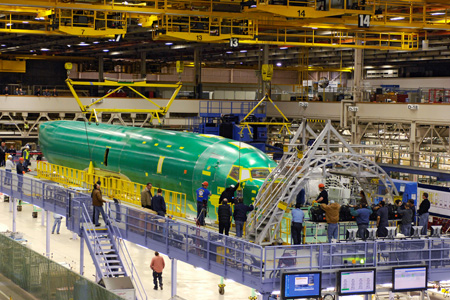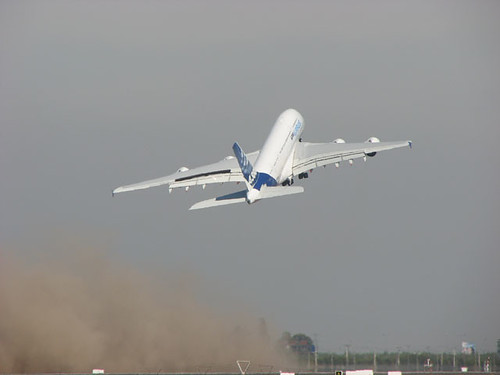Boeing on Monday began final assembly of the first P-8A Poseidon for the U.S. Navy. The P-8A will provide increased capability in long-range anti-submarine warfare, anti-surface warfare, intelligence, surveillance and reconnaissance.
The start of final assembly follows closely on the heels of Spirit AeroSystems’ delivery of the first P-8A fuselage to Boeing in Renton, Wash. Mechanics loaded the fuselage into a tooling fixture and began installing systems, wires, tubing and other small parts. Boeing will join the P-8A’s wings to its body later this year.

Boeing Integrated Defense Systems and Boeing Commercial Airplanes are working together to build the P-8A, a military derivative of the 737-800, on a new, third final-assembly production line in Renton, Wash. The third line takes advantage of the proven efficiencies, manufacturing processes and performance of the highly reliable Next-Generation 737.
The P-8A is built by a Boeing-led industry team that includes CFM International, Northrop Grumman, Raytheon, Spirit AeroSystems and GE Aviation. Under the current System Development and Demonstration contract, the team will build five test vehicles: three flight-test and two ground-test aircraft. Delivery of the first test aircraft to the Navy and first flight are scheduled for 2009.
The Navy plans to purchase 108 P-8As to replace its fleet of P-3C aircraft. Initial operational capability is slated for 2013.
Source: Boeing
Photo Credit: Boeing



 Besides a new A350 XWB cabin concept, Airbus introduces a new galley concept, named “SPICE” at Aircraft Interiors Expo Hamburg (Germany). The SPICE (SPace Innovative Catering Equipment) galley concept is developed by Airbus and is the result of extensive investigation into the needs and requirements of the airline community. The benefits of the SPICE are so significant that Airbus believes the concept has the potential to become the first new industry-wide standard for galleys in over forty years.
Besides a new A350 XWB cabin concept, Airbus introduces a new galley concept, named “SPICE” at Aircraft Interiors Expo Hamburg (Germany). The SPICE (SPace Innovative Catering Equipment) galley concept is developed by Airbus and is the result of extensive investigation into the needs and requirements of the airline community. The benefits of the SPICE are so significant that Airbus believes the concept has the potential to become the first new industry-wide standard for galleys in over forty years.